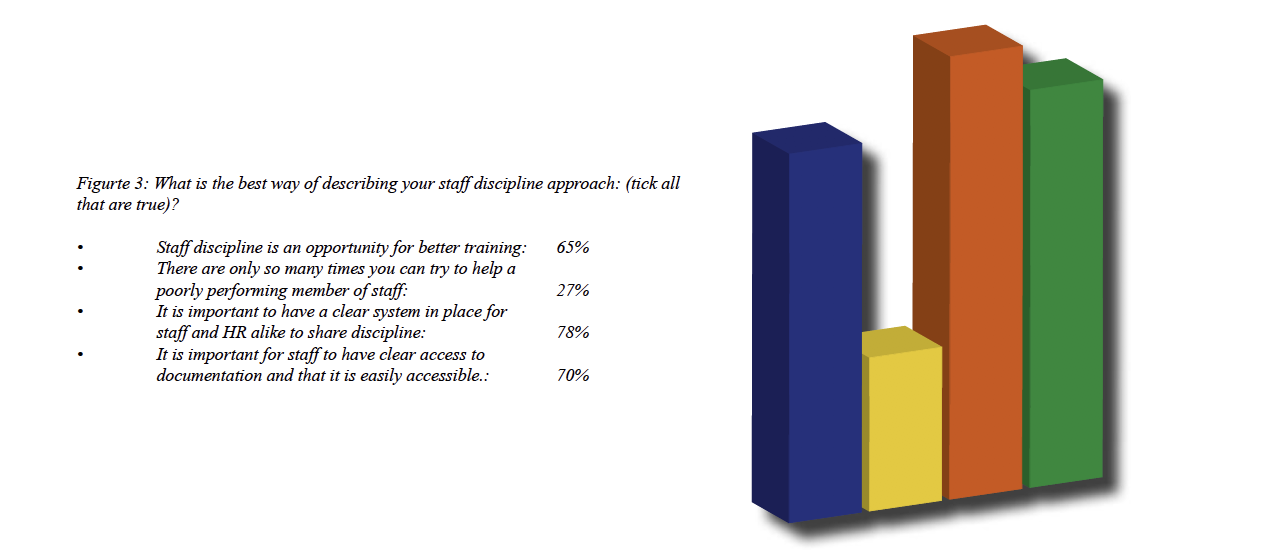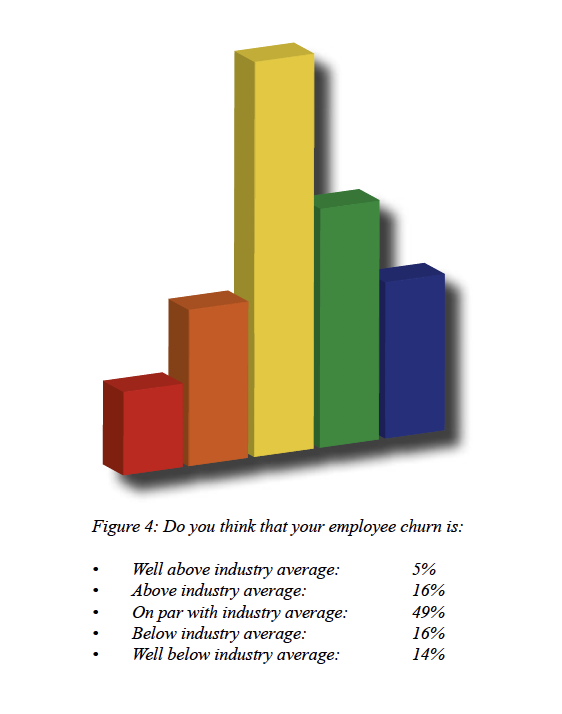Does your workforce have a revolving door?
In this third part of the analysis our exclusive research study run in conjunction with specialist workforce management solution provider Goodt, we now look at the study’s findings around employee management…
When it comes to workforce management, of course, staff placement alongside corrective measures to avoid poor performance and measuring employee churn is critical. Each of these elements plays a vital role in ensuring that the workforce remains optimally productive.
With this in mind, we focused one section of questions within the study, specifically around this area, to better understand the broader trends service-centric companies have within this field.
To begin, we asked our respondents how they rated their efficiency regarding the placement of their staff. In this area, the general sentiment amongst service-centric companies is that performance is above average. All respondents cited that their performances regarding staff placement were at a minimum average, with over three quarters (77%) stating that their organisations’ efficiency regarding staff placement was above average.
Further, 14% of respondents stated that their organisation was excellent in this regard.
An interesting side note to remember here is that unlike many studies into human resources, our response set was not limited to HR professionals but also included service management leaders who occupy a line manager role. This is an essential factor in this finding. While service management professionals may have some input into the placement policies, often, this is as in an influencer role as opposed to a policy-making role. As such, service directors may be more open to commenting negatively on workforce placement than their colleagues in Human Resources as they are one step removed.
Therefore, the consistent nature of positive appraisal for staff placement within this study does underline that this appears to be an area in which most organisations and the sector as a whole are confident in their performance.
While in an ideal world, each workforce would be comprised of dedicated and motivated employees eager to succeed by performing their duties to the best of their ability, the reality is that for many reasons, such motivation can wane, and individual performance can dip below acceptable levels. As such, disciplinary measures are an essential component of the HR mix.
However, how different organisations approach to discipline within the workforce can and does vary wildly from organisation to organisation. Within this study, we looked at four of the most common approaches underpinning workforce management and asked our respondents to tick any that apply to their organisation.
These were:
- Staff discipline is an opportunity for better training
- There are only so many times you can try to help a poorly performing member of staff
- It is important to have a clear system in place for staff and HR alike to share discipline
- It is important for staff to have clear access to documentation and that it is easily accessible
Regarding the first of these options (see fig 3 below), almost two thirds (65%) of respondents agreed with this statement revealing a pervasive culture of development rather than punishment within workforce discipline.

This is perhaps further emphasised when we look at the following option in the list and see that a far smaller number of respondents (27%) agreed with the statement that there are only so many times you can help an underperforming member of staff. However, when we look at the latter two options and the significant number of respondents who agreed with these statements, we clearly see an important outline of best practice regarding workforce management’s disciplinary aspects.
Firstly, we see that over three quarters (78%) of respondents to this study agree that it is crucial for there to be a clear system in place which is of benefit to both staff and HR personnel alike. Only slightly less also agreed with the statement that it is vital for staff to have clear access to documentation and that this documentation is easily acceptable.
The one thing that resonates from the strength of support for these two statements is that transparency within the disciplinary process and across the whole spectrum of workforce management is vital.
This is further addressed in another question in the study, where we specifically asked respondents if they felt that they had enough transparency in their workforce management processes. Again the research seems to indicate that at large, this is an area in which most service-centric companies are comfortable with their current processes.
In fact, in total, only 16% of respondents answered negatively to this question, with the large majority of these (80%) admitting that this is an area they were lacking in. However, these companies equated just 14% of the total response set.
The remaining 20% (2% of total response set) that answered negatively to this question stated they were currently addressing their lack of transparency.
At the other end of the spectrum, we see that over a quarter of companies (27%) state that they believe that there is enough transparency in their workforce management processes and go further to state that transparency is a major focus for them.
However, the large majority of respondents state that while they currently believe there is enough transparency within their workforce management processes, this could be improved. Over half (58%) of respondents selected this option, which is an exciting insight as it reinforces both the continuing need and requirements for clearly documented and accessible processes.
So far, in this section of the study, we have seen some reasonably clear indicators of harmonisation across the multiple industries reflected within the response set. However, as we turn to the final aspect of this section of the study, churn, we see something of a different picture.
As we look at whether our respondents felt their employee churn was well above industry average, well below the industry average, or somewhere in between, we see an almost perfect bell curve appear. This would indicate that while there is a robust median in this area (just under half at 47%), as you can see from the graph to the right (figure 4), there is also representation at both ends of the spectrum.
 We see that almost a quarter (23%) of companies believe that the employee churn within their business is above industry norms at the upper end of the spectrum. Of these, 6% feel that their employee churn is well above average.
We see that almost a quarter (23%) of companies believe that the employee churn within their business is above industry norms at the upper end of the spectrum. Of these, 6% feel that their employee churn is well above average.
On the opposite side of the spectrum, we see just under a third of companies (31%) believe that their employee churn is below the industry norm. Over a tenth of companies (14%) believe they are well below the average.
One of the most commonly cited reasons for high employee churn is employee burn-out. We asked our respondents if they had any means of monitoring this and pre-emptively acting to stop this brain drain and resolve the issue. When we look at the response set, we that just under half (46%) of companies have such a system in place.
However, as we look at the separate sides of the spectrum within the prior question, we see that those companies who believe their employee churn is below industry average are 15% more likely to have such a system in place. In comparison, those who perceive their organisation as having above-average employee churn are 17% less likely to have such a system in place.
This particular finding from the study would undoubtedly suggest having an effective means of monitoring employee burnout and taking pre-emptive measures is an effective approach to reducing employee churn.

This content is available exclusively for FSN Premium members. Please either log-in or subscribe for access


